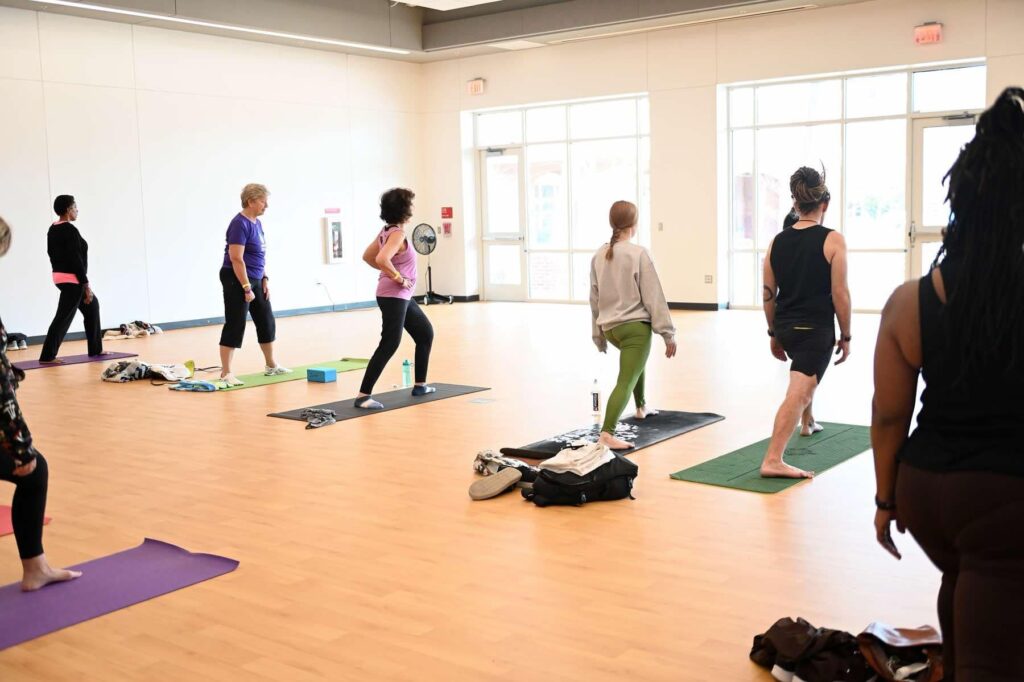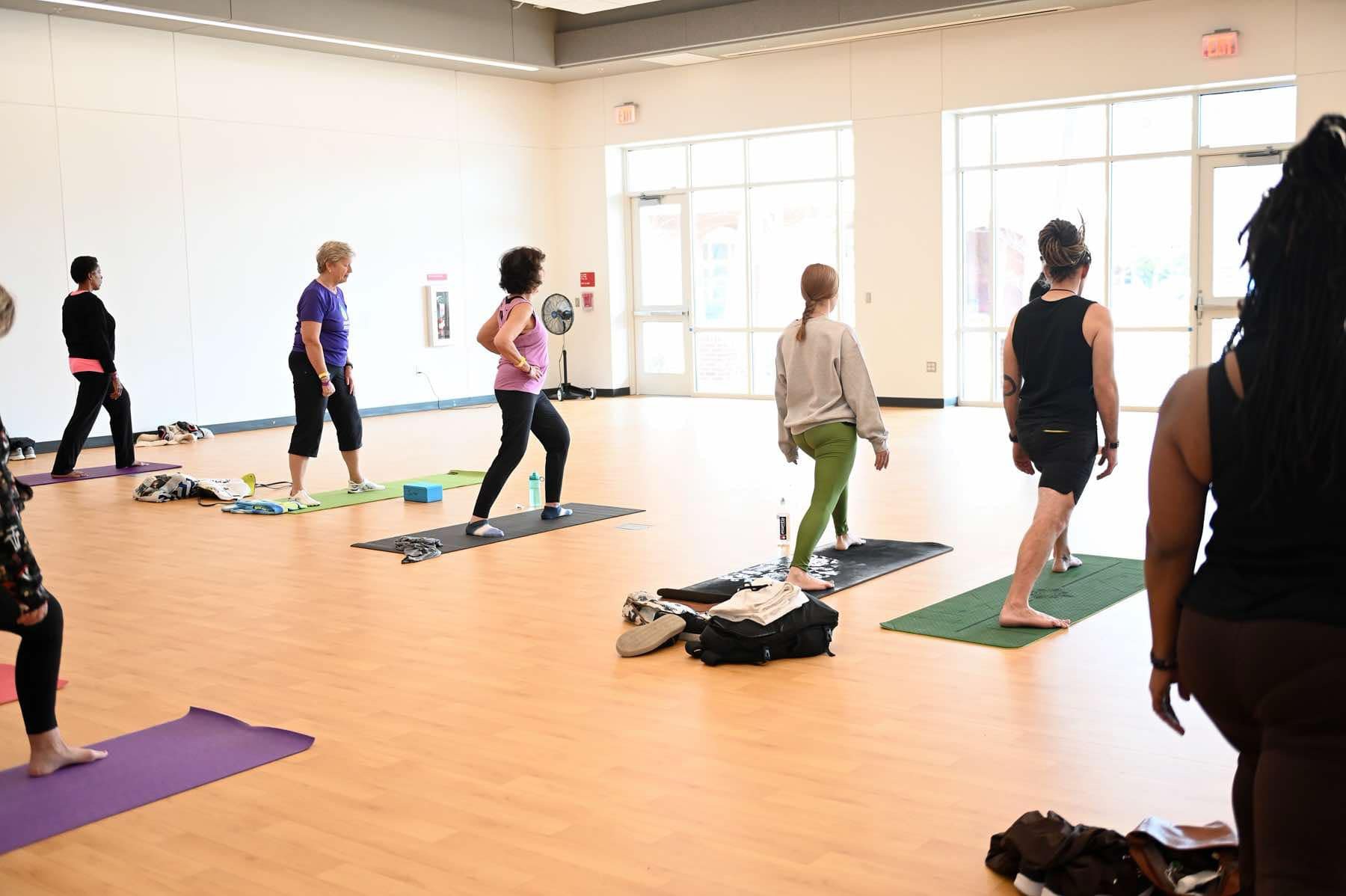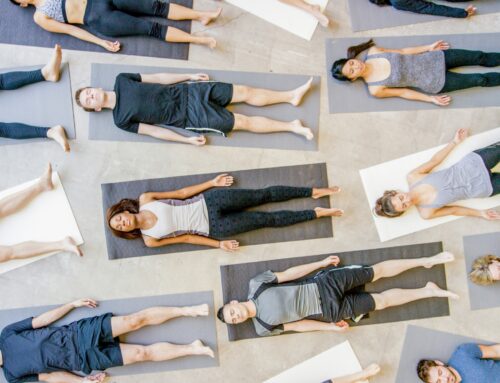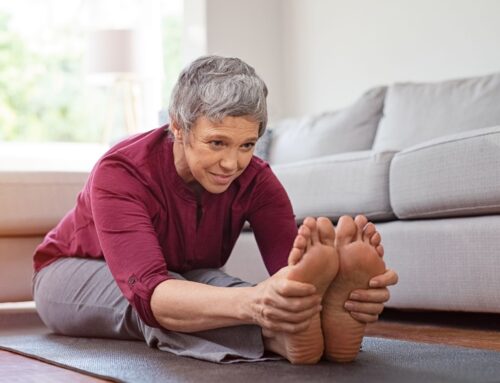
In February, I had the incredible opportunity to lead Gentle Yoga for a group of about 50 participants at Triangle Yoga Fest, Apex, North Carolina’s very first yoga festival. The class was advertised as an all-levels Gentle Yoga class, appropriate for beginners and individuals recovering from injury or other health concerns. I had the option to incorporate props into my class, but I opted for the simplicity of designing a class that could be accessible no matter what equipment was available. Yoga festivals are absolutely incredible opportunities for community and connection, but on the other hand, there are a lot of moving pieces and a lot going on. So, I approached my class from a place of simplicity and ease in order to minimize the unforeseen challenges that arise during an event of this size. I knew that each participant would have a yoga mat, so I rolled out my own mat and planned from there.
Yoga is a practice that meets each individual where they are, and gentle yoga embodies this philosophy fully. Whether you’re teaching at a festival, a studio, or a local park, creating a space that prioritizes comfort and accessibility allows every student to have a meaningful experience.
Welcome Everyone
Gentle yoga is an invitation to slow down and embrace movement in a way that honors the body’s experience no matter the season of life. As teachers, we have the privilege of creating a space where students of all backgrounds and abilities feel welcome. It is essential to set the tone from the very beginning—offering an inclusive and nurturing environment where every student is encouraged to move in a way that feels right for them.
When teaching an All-Levels class advertised as inclusive for individuals with injuries or health concerns, those students should be your top priority. Your role is to create an environment of safety and support.
- Check in with your students whenever possible. One effective way I did this was by passing out essential oils, using it as an opportunity to personally approach each student. I discovered that some students had never taken a yoga class in their nearly 80 years of life, while others had undergone hip replacements or experienced knee injuries. Since the class was designed for these students, I ensured it remained accessible and welcoming for them.
- Acknowledge all levels of experience. At the same time, I recognized that experienced, professional yoga teachers were also in the room. I wanted them to feel included, seen, and valued in their own right. They, too, deserve an enriching yoga experience. While your class may not always include other yoga teachers, you would be surprised at how experienced many of your Gentle Yoga students are. As our yoga practices progresses throughout life, we are tasked with adapting to our bodies as they change. The practitioner who has undergone a hip replacement could very well be a former Ashtanga Yogi. Many seniors attend Gentle Yoga as a way to continue their lifelong practice in a safe and accessible way.
- Adapt to the space and available resources. A unique challenge in my class at the Triangle Yoga Fest was the absence of props. Without blocks, blankets, or bolsters, I had to design a safe, accessible practice for students who had never done yoga before—all within a 35-minute session. Without the ability to “bring the floor up” or “elevate the hips for ease in sitting,” I relied on clear, intentional sequencing to provide a fulfilling experience. When planning the class, I rolled out my yoga mat and put myself in the mindset of a beginner who might be feeling stiff and achy. The joints are typically the first areas of concern: Knees, Wrists and Shoulders. Ironically, Easy Pose is often not so easy and Child’s Pose not very restful. I experimented with different modifications and positions and developed my cues for the practice from my yoga mat.
Introduce Choice
One of the most empowering aspects of gentle yoga is choice. The concept of “whatever is comfortable” is at the heart of asana practice. The earliest forms of yoga emphasized finding a steady and easeful posture—one that supports breath awareness and meditation. By reminding students that they have the freedom to modify, rest, or explore postures in ways that suit their individual needs, we cultivate a sense of agency and self-compassion.
Encourage students to listen to their own bodies rather than striving for a specific shape in each pose. Reinforce that their practice is their own and that every option—whether it’s taking a break, adjusting alignment, or skipping a posture entirely—is completely valid.
Manage Expectations
Gentle yoga is not about achieving deep stretches or mastering complex poses. Instead, it is about releasing tension, connecting with the breath, and moving mindfully. By setting clear expectations from the beginning, we help students understand that the goal is not intensity but presence. Encourage them to let go of comparisons and embrace the practice as it unfolds in their own unique way.
Observe
Awareness is a fundamental component of Gentle Yoga. Encourage students to observe how their bodies feel in each posture, how their breath flows, and how their minds respond to stillness. Observation without judgment fosters self-awareness and helps students honor their bodies with kindness and respect.
As a teacher, keen observation also allows you to assess your students’ needs in real-time. If you notice tension, hesitation, or discomfort, you can offer guidance or modifications to better support their practice.
Focus on the Subtle Experience
Gentle Yoga invites students to explore the subtleties of their practice. The warmth of the breath, the soft release of tension, and the quiet shifts in energy are just as meaningful as any physical movement. As teachers, we can guide students toward these subtleties—whether through mindful breathing, soft engagement of muscles, or the sensation of grounding through the feet.
Encourage students to notice the spaces between movements, the transition between inhale and exhale, and the way their body responds to stillness. These details deepen the practice and create a more profound sense of connection.
Leave Time for Savasana
Savasana is a crucial part of any yoga practice, but in Gentle Yoga, it holds even greater significance. This final resting pose allows students to absorb the benefits of the practice and settle into deep relaxation. Offering an extended Savasana provides time for the nervous system to shift, the mind to unwind, and the body to completely let go.
Consider guiding students through a body scan, gentle breath awareness, or a moment of gratitude to help them transition into deep relaxation. Creating a peaceful environment with soft lighting, calming words, or gentle music can enhance the experience even further.
Final Thoughts
Teaching gentle yoga is about creating a space of ease, presence, and self-compassion. It is a practice of softening, listening, and allowing. By fostering an environment where students feel safe, seen, and supported, we offer them the opportunity to experience the true essence of yoga—unity, awareness, and inner peace.
Whatever the teaching venue, remember that your presence and approach shapes the experience for your students. Keep it simple, stay present, and above all, guide with compassion. Your students will feel the difference, and so will you.




